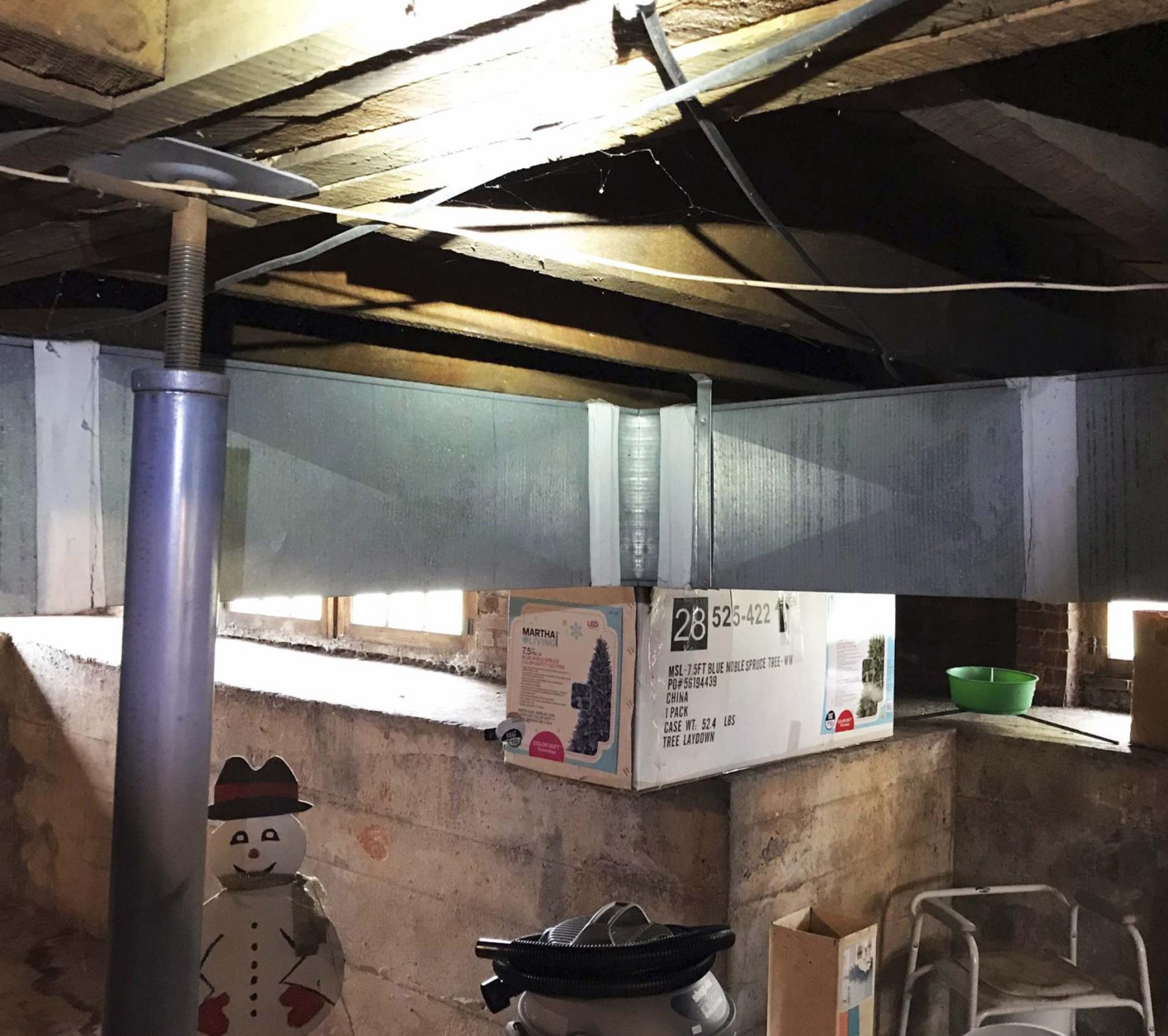Question: I was hoping you could give a little advice. I have been searching all over to find a general answer about what to do with the asbestos tape on the duct work joints in my home. It is basically every joint, so it is in a lot of places, but in pretty good shape. I haven’t had it tested but a contractor and other home inspector thought the tape probably does contain asbestos.
I was curious if you had specific spray paint to use, or if it would be better to purchase something like an actual professional lagging coat encapsulate to paint over the tape? I don’t mind spending that much more money to do a better job, but really can’t afford to have a professional remove it. — Brad Dunmire
Answer: Asbestos-containing tape on older ducts may be quite easy to deal with, as long as it is fully accessible. Encapsulation is an acceptable method of remediation, but may not be possible if the tape is completely covering numerous ducts or hidden in walls and floor cavities, in which case duct replacement may be the only way to completely eliminate the health risk.
Most older homes that have white, fibrous tape on duct joints, and other small areas, are not a major concern for health issues. If the material is all visible, typically in between the main floor joists in unfinished basements, there may be little to worry about. If the tape is mostly intact, and easily accessible, covering it up may eliminate most concerns. This material, which likely has embedded asbestos fibres, should not become a safety concern unless it becomes deteriorated. Because it was almost always installed on the outside of the warm air ducts, any fibres emanating from frayed tape would be blown out into the basement. Because these ducts are pressurized when the furnace blower is operating, there is little possibility that any friable fibres could be blown through the main living space in the home.
To prevent even minor contamination of the basement with asbestos fibres, if the tape becomes worn or damaged, encapsulation can be attempted. Encapsulation is one form of acceptable remediation for asbestos-containing products, which is simply wrapping or sealing up these materials. Encapsulation must fully seal the exposed areas to be effective, and may involve one or more of several different methods. For the apparently small amount of duct tape in both of your homes, covering up all existing areas should suffice.
While I am not familiar with the commercial products available to professional remediation contractors, if not completely removed from the home, most will use either a type of spray paint, or more modern form of duct tape. I’m sure there are specialized paints that can be applied by roller, brush or spray that will suffice, but as long as the product seals the entire outside surface of the whitish tape it should be fine. Spray paints may be the best, due to the ease of application and their ability to reach tight areas. Perhaps the biggest reason to use a spray-on finish is they may provide the best chance for complete encapsulation of any loose fibres, because of the minimal contact necessary during application. Ensure that any spray paint used will provide a long-lasting covering and will bind any friable materials during application. Doing more than one application may be one way of ensuring that this is accomplished. Also, during work around any asbestos-containing material, a proper respirator and goggles should always be worn, to prevent inhalation of fibres.
The second most common method for encapsulating this type of tape is to cover it with one or more layers of other materials. While plaster and fabric are often used for larger or uneven surfaces, that would be way too much effort for your purposes. I have found that common, aluminum duct tape may be the most effective and easily applied covering, aside from spray paint. This self-adhesive material has very good adherence to many surfaces, but especially metal ducting. After peeling off the non-stick backing, this tape can be wrapped and stuck on directly over the offensive, older tape. Once covered, additional aluminum tape should be adhered over the edges of the first layer, to ensure better adherence. Before starting, any excessive dust or dirt should be carefully removed from the surface of the asbestos tape, and adjacent ducts, preferably with a HEPA-filter vacuum.
The only reason that you would consider replacing the ducts is if there is a large amount of the asbestos tape on hidden ducts or heating boots. If these are hidden in existing wall cavities, or in inaccessible floor spaces, then duct removal may be simpler than trying to fully encapsulate or remove the offensive material. This will require either abandonment of the older ducts, or partial removal of floors and walls to access the covered ducting. If that is the situation in your home, which should be a worst-case scenario, it’s time to call in a professional remediation contractor to prevent contamination of your home during removal.
Painting or covering up the complete surface of asbestos containing duct tape is a good method to prevent a health concern in your homes. This may be fairly easily accomplished, as long as you take the proper safety precautions and the areas are easily accessible. As long as you don’t have large, or hidden, areas of this material, which then would require professional help for costly removal.
Ari Marantz is the owner of Trained Eye Home Inspection Ltd. and the past president of the Canadian Association of Home & Property Inspectors — Manitoba (cahpi.mb.ca). Questions can be emailed to the address below. Ari can be reached at 204-291-5358 or check out his website at trainedeye.ca.
trainedeye@iname.com




